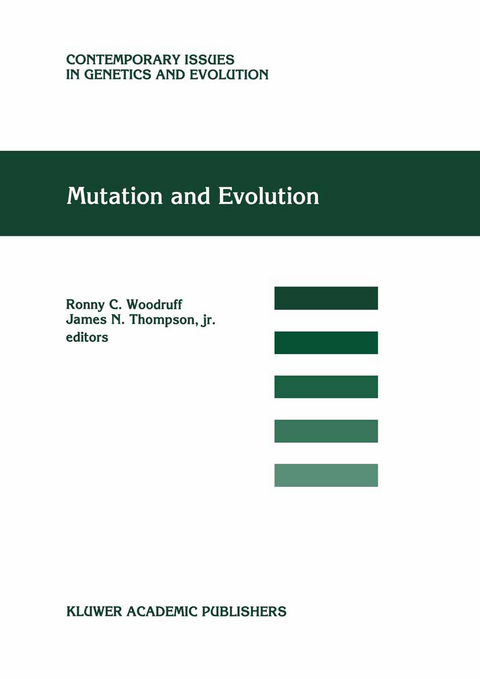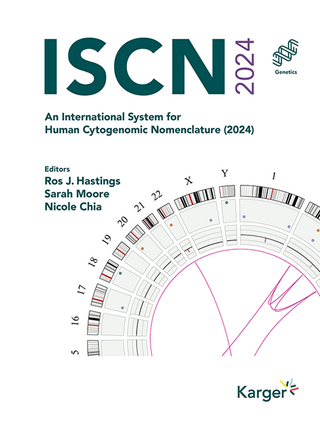
Mutation and Evolution
Springer (Verlag)
978-94-010-6193-3 (ISBN)
Deleterious mutations.- Some evolutionary consequences of deleterious mutations.- Risk of population extinction from fixation of deleterious and reverse mutations.- Deleterious mutation accumulation in organelle genomes.- Mutation-selection balance with multiple alleles.- Mutation pressure, natural selection, and the evolution of base composition in Drosophila.- Deleterious mutations in animal mitochondrial DNA.- Requisite mutational load, pathway epistasis, and deterministic mutation accumulation in sexual versus asexual populations.- Neutral (nearly neutral) mutations.- Evolution by nearly-neutral mutations.- Compensatory neutral mutations and the evolution of RNA.- The amount and pattern of DNA polymorphism under the neutral mutation hypothesis.- Beneficial mutations.- Adaptive mutagenesis: a process that generates almost exclusively beneficial mutations.- The fate of competing beneficial mutations in an asexual population.- An embarrassment of riches: the stochastic generation of beneficial mutations.- Selection, convergence, and intragenic recombination in HLA diversity.- Quantitative traits.- Mutation and conflicts between artificial and natural selection for quantitative traits.- Measuring spontaneous deleterious mutation process.- Polygenic mutation in Drosophila melanogaster: genotype x environment interaction for spontaneous mutations affecting bristle number.- Environment-influenced expression of polygene mutations isolated from a natural population of Drosophila melanogaster.- Inferences on genome-wide deleterious mutation rates in inbred populations of Drosophila and mice.- How should we explain variation in the genetic variance of traits?.- The mutation rate and the distribution of mutational effects of viability and fitness in Drosophila melanogaster.- Evolution of intermediate self ing rates in plants: pollination ecology versus deleterious mutations.- Mathematical properties of mutation-selection models.- Mutation, life history, and senescence.- Mutation and senescence: where genetics and demography meet.- Spontaneous mutation for life-history traits in Drosophila melanogaster.- Mutation rates in mangroves and other plants.- Genetic changes.- Asymmetrical DNA replication promotes evolution: disparity theory of evolution.- Distribution of fitness effects caused by random insertion mutations in Escherichia coli.- Mutation and evolution of microsatellites in Drosophila melanogaster.- The molecular clock revisited: the rate of synonymous vs. replacement change in Drosophila.- Directional mutational pressure affects the amino acid composition and hydrophobicity of proteins in bacteria.- Mutation and selection at silent and replacement sites in the evolution of animal mitochondrial DNA.- Enigma of Y chromosome degeneration: Neo-Y and Neo-X chromosomes of Drosophila miranda a model for sex chromosome evolution.- Cell lineage selection, germinal mosaics, and evolution.- The developmental basis for germline mosaicism in mouse and Drosophila melanogaster.- Major impacts of gonadal mosaicism on hereditary risk estimation, origin of hereditary diseases, and evolution.- Discovery of numerous clusters of spontaneous mutations in the specific-locus test in mice necessitates major increases in estimates of doubling doses.- Clusters of new identical mutants and the fate of underdominant mutations.- Mutation and selection within the individual.- Mutation and the dynamics of adaptation.- Towards a theory of evolutionary adaptation.- A pleiotropic model of phenotypic evolution.- Population differentiation through mutation and drift — acomparison of genetic identity measures.- Inferring the major genomic mode of dominance and overdominance.- Genetic measurement theory of epistatic effects.
| Reihe/Serie | Contemporary Issues in Genetics and Evolution ; 7 |
|---|---|
| Zusatzinfo | VII, 581 p. |
| Verlagsort | Dordrecht |
| Sprache | englisch |
| Maße | 210 x 297 mm |
| Themenwelt | Medizin / Pharmazie ► Medizinische Fachgebiete |
| Studium ► 2. Studienabschnitt (Klinik) ► Humangenetik | |
| Naturwissenschaften ► Biologie ► Biochemie | |
| Naturwissenschaften ► Biologie ► Evolution | |
| Naturwissenschaften ► Biologie ► Genetik / Molekularbiologie | |
| Naturwissenschaften ► Biologie ► Zoologie | |
| ISBN-10 | 94-010-6193-9 / 9401061939 |
| ISBN-13 | 978-94-010-6193-3 / 9789401061933 |
| Zustand | Neuware |
| Informationen gemäß Produktsicherheitsverordnung (GPSR) | |
| Haben Sie eine Frage zum Produkt? |
aus dem Bereich


